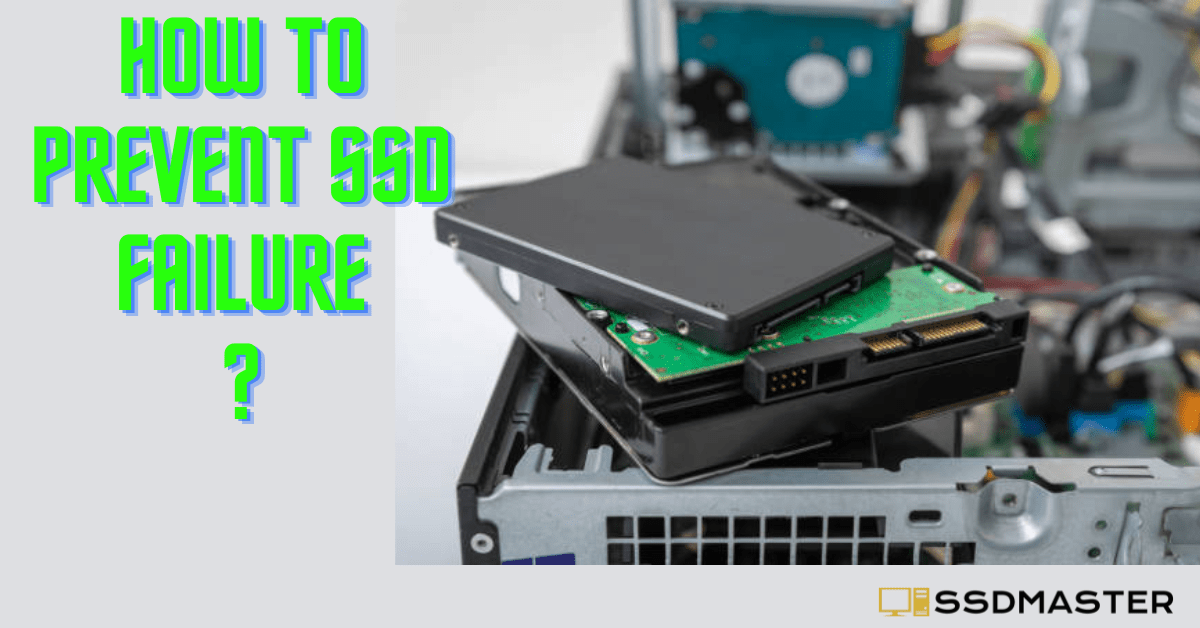Solid-state drives (SSDs) have become increasingly popular due to their speed and reliability. However, like any other electronic device, SSDs can fail, and data loss can occur. In this article, we will discuss How to Prevent SSD Failure and the common causes of SSD failure and provide some tips and tricks to prevent SSD failure and prolong the life of your drive.
Understanding SSD Failure
Before we dive into the tips and tricks to prevent SSD failure, it is essential to understand what causes SSD failure. The following are the most common causes of SSD failure:
Overheating
Overheating is one of the leading causes of SSD failure. When an SSD overheats, it can cause damage to the flash memory cells, which can result in data loss or drive failure.
Power Surges
Power surges can also cause SSD failure. When a power surge occurs, it can damage the SSD’s circuit board, causing data loss or drive failure.
Physical Damage
Physical damage, such as dropping an SSD or exposing it to extreme temperatures or moisture, can cause the drive to fail.
Manufacturing Defects
Manufacturing defects can also cause SSD failure. These defects can range from faulty components to assembly errors.
SSD failure symptoms
- Slow performance: One of the early signs of an SSD failure is slow performance, such as slow boot times and slow read/write speeds.
- File corruption: Another common symptom of SSD failure is file corruption. This can manifest as files that cannot be opened or are missing.
- Blue screen of death (BSOD): A BSOD is a critical error that occurs when Windows encounters a problem that it cannot recover from. An SSD failure can cause a BSOD.
- Strange noises: SSDs do not have moving parts, so they do not make noise during normal operation. If you hear strange clicking or buzzing noises coming from your computer, it could be a sign of an SSD failure.
- System crashes: If your computer crashes or freezes frequently, it could be due to an SSD failure.
- Disk errors: If your computer reports disk errors, it could be a sign of an SSD failure.
Tips and Tricks to Prevent SSD Failure
Now that we know what causes SSD failure let’s look at some tips and tricks to prevent SSD failure.
Keep Your SSD Cool
As we mentioned earlier, overheating is one of the leading causes of SSD failure. To prevent overheating, ensure that your SSD is adequately ventilated, and the surrounding environment is cool.
Avoid Power Surges
Power surges can cause significant damage to your SSD. To prevent power surges, use a surge protector, and ensure that your SSD is connected to a stable power supply.
Handle Your SSD with Care
Physical damage can cause your SSD to fail. Therefore, it is essential to handle your SSD with care. Avoid dropping your SSD or exposing it to extreme temperatures or moisture.
Update Your Firmware
Manufacturing defects can cause SSD failure. Therefore, it is important to keep your SSD firmware up to date. The latest firmware updates often include bug fixes and improvements that can prolong the life of your drive.
Use TRIM
TRIM is a feature that helps to optimize SSD performance and prolong the life of your drive. Enabling TRIM will ensure that your SSD is consistently performing at its best.
Avoid Overloading Your SSD
Overloading your SSD can cause it to fail. Therefore, it is important to avoid filling your drive to capacity. Consider upgrading to a larger SSD or using an external hard drive to store less frequently accessed files.
Perform Regular Backups
Performing regular backups of your data can help prevent data loss in the event of SSD failure. Consider using a cloud backup service or an external hard drive to back up your data regularly. Use this free backup tool for your windows (EaseUS Todo Backup Free)
Conclusion
SSDs are fast and reliable, but they can fail. However, by following the tips and tricks outlined in this article, you can prevent SSD failure and prolong the life of your drive. Remember to keep your SSD cool, avoid power surges, handle your SSD with care, update your firmware, use TRIM, avoid overloading your SSD, and perform regular backups.
FAQs
Can I use an SSD in a hot environment?
While SSDs can withstand high temperatures, it is recommended to keep your SSD at a moderate temperature to prevent overheating.
How often should I update my SSD firmware?
It is recommended to check for firmware updates every six months and update your SSD firmware as needed.
Can I use an SSD for long-term storage?
While SSDs are great for fast access to frequently used files, they are not recommended for long-term storage. Instead, consider using an external hard drive or a cloud backup service for long-term storage.

